Medicines To Help You
 Birth Control Guide
Birth Control Guide
FDA Office of Women's Health
PDF Version
Barrier Methods
Male Condom (Latex or Polyurethane)
Female Condom
Diaphragm with Spermicide
Sponge with Spermicide
Cervical Cap with Spermicide
Spermicide Alone
Hormonal Methods
Oral Contraceptives (Combined Pill)
Oral Contraceptives (Progestin-only)
Oral-Contraceptives (Extended/Continuous Use)
Patch
Vaginal Contraceptive Ring
Shot / Injection
Emergency Contraception
Emergency Contraceptives “The Morning After Pill”
Implanted Devices
IUD Implanted Devices
Implantable Rod
Permanent Methods for Women
Trans-abdominal Surgical Sterilization / Surgical Implant
Transcervical Surgical Sterilization Implant
Permanent Method for Men
Vasectomy
To Learn More
Birth Control Chart (PDF)
This guide gives the basic facts about the different kinds of FDA-approved medicines and devices for birth control. Ask your doctor to tell you about all of the risks and benefits of using these products.
If you do not want to get pregnant, do not have sex. If you do have sex, there are many birth control options to choose from. No one product is best for everyone. This guide lists all FDA-approved products for birth control. Talk to your doctor, nurse, or pharmacist about the best method for you.
Some things to think about:
- Your health.
- How often you have sex.
- How many sexual partners you have.
- If you want to have children in the future.
- If you will need a prescription or if you can buy the method over-the-counter.
- The number of pregnancies expected per 100 women who use a method for
one year. For comparison, about 85 out of 100 sexually active women who do
not use any birth control can expect to become pregnant in a year.
Tell your doctor, nurse, or pharmacist if you:
- Smoke
- Have liver disease
- Have blood clots
- Have family members who have had blood clots
- Are taking any other medicines
- Are taking any herbal products, like St. Johns Wort
To avoid pregnancy:
- No matter which method you choose, it is important to follow all of the
directions carefully. If you don’t, you raise your chance of getting pregnant.
- The best way to avoid pregnancy and sexually transmitted infections (STIs)
is to practice total abstinence (do not have any sexual contact).
Barrier Methods
Put up a block, or barrier, which keeps the sperm from reaching the egg
 Male Condom (Latex or Polyurethane)
Male Condom (Latex or Polyurethane)
What is it?
A thin film sheath placed over the erect penis to stop sperm
from reaching the egg.
How do I use it?
- Put it on the erect penis right before sex.
- Use it only once and then throw it away.
- Pull out before the penis softens.
- Hold the condom against the base of the penis before you pull out.
How do I get it?
- You do not need a prescription.
- You can buy it over-the-counter.
Possibility of getting pregnant
(Number of pregnancies expected per 100 women who use this method for one year)
- Out of 100 women who use this method, 11-16 may get pregnant.
- The most important thing is that you use a condom every time you have sex.
Some Risks
- Irritation
- Allergic reactions (If you are allergic to latex, you can try condoms made of
polyurethane.)
Does it protect me from sexually transmitted infections (STIs)?
- Except for abstinence, latex condoms are the best protection against HIV/AIDS
and other STIs.
- Condoms are the only contraceptive product that may protect against most
sexually transmitted infections (STIs).
 Female Condom
Female Condom
What is it?
A lubricated, thin polyurethane pouch that is put into the
vagina.
How do I use it?
- Put the female condom into the vagina right before sex.
- Use it only once and then throw it away.
- You need a new female condom each time you have sex.
How do I get it?
- You do not need a prescription.
- You can buy it over-the-counter.
Possibility of getting pregnant
(Number of pregnancies expected per 100 women who use this method for one year)
Out of 100 women who use this method, about 20 may get pregnant.
Some Risks
- Irritation
- Allergic reactions
Does it protect me from sexually transmitted infections (STIs)?
- May give some protection against STIs.
- Not as effective as latex condoms.
- More research is needed.
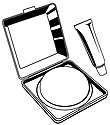 Diaphragm with Spermicide
Diaphragm with Spermicide
What is it?
- A dome-shaped flexible disk with a flexible rim.
- Made from latex rubber or silicone.
- It covers the cervix so that sperm cannot reach the egg.
How do I use it?
- You need to put spermicidal jelly on the inside of the
diaphragm before putting it into the vagina.
- You must put the diaphragm into the vagina before
having sex.
- You must leave the diaphragm in place at least 6 hours
after having sex.
- It can be left in place for up to 24 hours. You need to use
more spermicide every time you have sex.
How do I get it?
- You need a prescription.
- A doctor or nurse will need to do an exam to find the right size diaphragm
for you.
- You should have the diaphragm checked after childbirth or if you lose more
than 15 lbs., you might need a different size.
Possibility of getting pregnant
(Number of pregnancies expected per 100 women who use this method for one year))
Out of 100 women who use this method, about 15 may get pregnant.
Some Risks
- Irritation, allergic reactions, and urinary tract infection.
- If you keep it in place longer than 24 hours, there is a risk of toxic shock
syndrome. Toxic shock is a rare but serious infection.
Does it protect me from sexually transmitted infections (STIs)? No
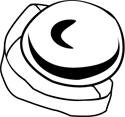 Sponge with Spermicide
Sponge with Spermicide
What is it?
A disk-shaped polyurethane device with the spermicide
nonoxynol-9.
How do I use it?
- Put it into the vagina before you have sex.
- Protects for up to 24 hours. You do not need to use more
spermicide each time you have sex.
- You must leave the sponge in place for at least 6 hours
after having sex.
- You must take the sponge out within 30 hours after you
put it in. Throw it away after you use it.
How do I get it?
- You do not need a prescription.
- You can buy it over-the-counter.
Possibility of getting pregnant
(Number of pregnancies expected per 100 women who use this method for one year))
- Out of 100 women who use this method, 16-32 may get pregnant.
- It may not work as well for women who have given birth. Childbirth stretches
the vagina and cervix and the sponge may not fit as well.
Some Risks
- Irritation and allergic reactions.
- Some women may have a hard time taking the sponge out.
- If you keep it in place longer than 24-30 hours, there is a risk of toxic shock
syndrome. Toxic shock is a rare but serious infection.
Does it protect me from sexually transmitted infections (STIs)? No.
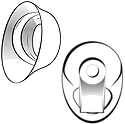 Cervical Cap with Spermicide
Cervical Cap with Spermicide
What is it?
A soft latex or silicone cup with a round rim, which fits
snugly around the cervix. It covers the cervix so that
sperm cannot reach the egg.
How do I use it?
- You need to put spermicidal jelly inside the cap before
you use it.
- You must put the cap in the vagina before you have sex.
- You may find it hard to put in.
- You must leave the cap in place for at least 6 hours after
having sex.
- You may leave the cap in for up to 48 hours.
- You do NOT need to use more spermicide each time you have sex.
How do I get it?
You need a prescription.
Possibility of getting pregnant
(Number of pregnancies expected per 100 women who use this method for one year))
- Out of 100 women who use this method, about 17-23 may get pregnant.
- It may not work as well for women who have given birth. Childbirth
stretches the vagina and cervix and the cap may not fit as well.
Some Risks
- Irritation, allergic reactions, and abnormal Pap test.
- If you keep it in place longer than 48 hours, there is a risk of toxic shock
syndrome. Toxic shock is a rare but serious infection.
Does it protect me from sexually transmitted infections (STIs)? No.
 Spermicide Alone
Spermicide Alone
What is it?
A foam, cream, jelly, film, or tablet that kills sperm.
How do I use it?
- Instructions can be different for each type of spermicide.
Read the label before you use it.
- You need to put spermicide into the vagina between 5
and 90 minutes before you have sex.
- You usually need to leave it in place at least 6 to 8 hours
after; do not douche or rinse the vagina for at least
6 hours after sex.
How do I get it?
- You do not need a prescription.
- You can buy it over-the-counter.
Possibility of getting pregnant
(Number of pregnancies expected per 100 women who use this method for one year))
- Out of 100 women who use this method, about 30 may get pregnant.
- Different studies show different rates of effectiveness.
Some Risks
- Irritation.
- Allergic reactions.
- Urinary tract infection.
- If you are also using a medicine for a vaginal yeast infection, the spermicide
might not work as well.
Does it protect me from sexually transmitted infections (STIs)? No.
Hormonal Methods
Prevent pregnancy by interfering with ovulation, fertilization, and/or implantation of the fertilized egg
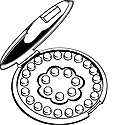 Oral Contraceptives (Combined Pill)
“The Pill”
Oral Contraceptives (Combined Pill)
“The Pill”
What is it?
- A pill that uses hormones (estrogen and progestin) to stop
the ovaries from releasing eggs in most women.
- It also thickens the cervical mucus, which keeps the
sperm from joining with the egg.
How do I use it?
You should swallow the pill at the same time every day,
whether or not you have sex.
How do I get it?
You need a prescription.
Possibility of getting pregnant
(Number of pregnancies expected per 100 women who use this method for one year)
Out of 100 women who use this method, about 5 may get pregnant.
Some Risks
- Dizziness.
- Nausea.
- Changes in your cycle (period).
- Changes in mood.
- Weight gain.
- It is not common, but some women who take the pill develop high blood
pressure. It is rare, but some women will have blood clots, heart attacks, or
strokes.
Does it protect me from sexually transmitted infections (STIs)? No.
 Oral Contraceptives (Progestin-only)
“The Pill”
Oral Contraceptives (Progestin-only)
“The Pill”
What is it?
- A pill that has only the hormone progestin.
- It thickens the cervical mucus, which keeps sperm
from joining with an egg.
- Less often, it stops the ovaries from releasing eggs.
How do I use it?
You should swallow the pill at the same time every day,
whether or not you have sex.
How do I get it?
You need a prescription.
Possibility of getting pregnant
(Number of pregnancies expected per 100 women who use this method for one year)
Out of 100 women who use this method, about 5 may get pregnant.
Some Risks
- Irregular bleeding.
- Weight gain.
- Breast tenderness.
- Less protection against ectopic pregnancy (pregnancy in the fallopian tubes)
than the combination pill.
Does it protect me from sexually transmitted infections (STIs)? No.
 Oral-Contraceptives (Extended/Continuous Use)
“The Pill”
Oral-Contraceptives (Extended/Continuous Use)
“The Pill”
What is it?
- A pill that uses hormones (estrogen and progestin) to stop
the ovaries from releasing eggs in most women.
- It also thickens the cervical mucus, which keeps the sperm
from joining with the egg.
- These pills are designed so women have fewer or no
periods.
How do I use it?
You should swallow the pill at the same time every day,
whether or not you have sex.
How do I get it?
You need a prescription.
Possibility of getting pregnant
(Number of pregnancies expected per 100 women who use this method for one year))
Out of 100 women who use this method, about 5 may get pregnant.
Some Risks
- Risks are similar to other oral contraceptives.
- You may have fewer planned periods. If you miss a scheduled period, you may
be pregnant.
- You will likely have more bleeding and spotting between periods than with other
oral contraceptives.
Does it protect me from sexually transmitted infections (STIs)? No.
 Patch
Patch
What is it?
- This is a skin patch you can wear on the lower abdomen,
buttocks, or upper body.
- It uses hormones (estrogen and progestin) to stop the
ovaries from releasing eggs in most women.
- It also thickens the cervical mucus, which keeps the sperm
from joining with the egg.
How do I use it?
- You put on a new patch and take off the old patch once a week for 3 weeks.
- During the fourth week, you do not wear a patch and you have a menstrual
period.
How do I get it?
You need a prescription.
Possibility of getting pregnant
(Number of pregnancies expected per 100 women who use this method for one year))
- Out of 100 women who use this method, about 5 may get pregnant.
- The patch may be less effective for women who weigh more than 198 lbs.
Some Risks
- It will expose you to higher than average levels of estrogen than most oral
contraceptives.
- It is not known if serious risks, such as blood clots, are greater with the skin
patch because of the greater exposure to estrogen.
Does it protect me from sexually transmitted infections (STIs)? No.
 Vaginal Contraceptive Ring
Vaginal Contraceptive Ring
What is it?
- It is a flexible ring that is about 2 inches around.
- You put it into the vagina and it releases hormones
(progestin and estrogen) to stop the ovaries from
releasing eggs in most women.
- It also thickens the cervical mucus, which keeps the sperm
from joining with the egg.
How do I use it?
- You put the ring into the vagina yourself.
- You need to keep the ring in your vagina for 3 weeks, then
take it out for 1 week.
- If the ring falls out and stays out for more than 3 hours,
you need to use another kind of birth control method until
the ring has been used for 7 days in a row.
How do I get it?
You need a prescription.
Possibility of getting pregnant
(Number of pregnancies expected per 100 women who use this method for one year))
Out of 100 women who use this method, about 5 may get pregnant.
Some Risks
- Vaginal discharge, swelling of the vagina, and irritation.
- Other risks are similar to oral contraceptives (combined pill).
Does it protect me from sexually transmitted infections (STIs)? No.
 Shot/Injection
Shot/Injection
What is it?
- A shot of the hormone progestin that stops the
ovaries from releasing eggs in most women.
- It also thickens the cervical mucus, which keeps the
sperm from joining with the egg.
How do I use it?
You need one shot every 3 months.
How do I get it?
You need a prescription.
Possibility of getting pregnant
(Number of pregnancies expected per 100 women who use this method for one year))
Out of 100 women who use this method, less than 1 may get pregnant.
Some Risks
- You may have bone loss if you get the shot for more than 2 years.
- Bleeding between periods.
- Weight gain.
- Breast tenderness.
- Headaches.
Does it protect me from sexually transmitted infections (STIs)? No.
Emergency Contraception
May be used if you do not use birth control or if your regular birth control fails
It should not be used as a regular form of birth control
 Emergency Contraceptives
“The Morning After Pill”
Emergency Contraceptives
“The Morning After Pill”
What is it?
- These are pills with hormones (either progestin alone or
progestin plus estrogen) that are similar to other oral
contraceptives.
- They stop the ovaries from releasing an egg or stops
sperm from joining with the egg.
How do I use it?
- You can use these after you have unprotected sex (did not use birth control).
- You can also use these if your birth control did not work (i.e. the condom broke).
- You must swallow the pills within 72 hours of having unprotected sex.
- For the best chance for it to work, you should start taking the pills as soon as
possible after unprotected sex.
How do I get it?
- You can buy it over the counter if you are 18 years or older.
- If you are younger than 18, you need a prescription.
Possibility of getting pregnant
(Number of pregnancies expected per 100 women who use this method for one year))
This method reduces the risk of pregnancy resulting from a single act of
unprotected sex by almost 85 percent, if you take it within 72 hours.
Some Risks
- Nausea
- Vomiting
- Abdominal pain
- Fatigue, and headache
Does it protect me from sexually transmitted infections (STIs)? No.
Implanted Devices
Are inserted into the body and can be kept in place for a few years
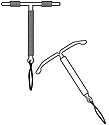 IUD
Implanted Devices
IUD
Implanted Devices
What is it?
A T-shaped device that is put into the uterus by a
healthcare provider.
How do I use it?
After a doctor or other healthcare provider puts in the
IUD, it can stay in place for 5 to 10 years, depending
on the type.
How do I get it?
You need a prescription.
Possibility of getting pregnant
(Number of pregnancies expected per 100 women who use this method for one year))
Out of 100 women who use this method, less than 1 may get pregnant.
Some Risks
- Cramps
- Bleeding
- Pelvic inflammatory disease
- Infertility
- Tear or hole in the uterus
Does it protect me from sexually transmitted infections (STIs)? No.
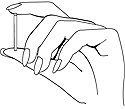 Implantable Rod
Implantable Rod
What is it?
- A thin, matchstick-sized rod that contains the hormone
progestin.
- It thickens the cervical mucus, which keeps sperm from
joining with the egg.
- Less often, it stops the ovaries from releasing eggs.
How do I use it?
- It is put under the skin on the inside of your upper arm.
- It lasts up to 3 years.
How do I get it?
- A doctor or nurse needs to put it under the skin of your arm.
- You will get a shot in the upper arm to make the skin numb,
then the rod is placed just under the skin with a needle.
Possibility of getting pregnant
(Number of pregnancies expected per 100 women who use this method for one year))
- Out of 100 women who use this method, less than 1 may get pregnant.
- It might not work as well for overweight or obese women.
- It might not work as well if you are taking certain medicines for things like:
tuberculosis (TB), seizures, depression, or HIV/AIDS.
- Tell your doctor if you are taking the herb St. John’s Wort.
Some Risks:
- Acne
- Weight gain
- Cysts of the ovaries
- Mood changes
- Depression
- Hair loss
- Headache
- Upset stomach
- Dizziness
- Lower interest in sexual activity
- Sore breasts
- Changes in your periods
Does it protect me from sexually transmitted infections (STIs)? No.
Permanent Methods for Women
Are for women who are sure they never want to have a child or do not want any more children, because they cannot be changed back
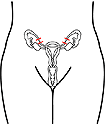 Sterilization Surgery for Women
Sterilization Surgery for Women
Trans-abdominal Surgical Sterilization/Surgical Implant
What is it?
A device is placed on the outside of each fallopian tube.
The woman’s fallopian tubes are blocked so the egg and
sperm can’t meet in the fallopian tube. This stops you
from getting pregnant.
How do I use it?
- This is a surgery a woman has only once.
- It is permanent.
How do I get it?
This is a surgery you ask for. You will need a small incision (cut) below
the belly button and 2 or more smaller incisions (cuts).
Possibility of getting pregnant
(Number of pregnancies expected per 100 women who use this method for one year)
Out of 100 women who use this method, less than 1 may get pregnant.
Some Risks
- Pain
- Bleeding
- Infection or other complications after surgery
- Ectopic (tubal) pregnancy
Does it protect me from sexually transmitted infections (STIs)? No.
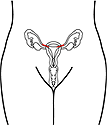 Sterilization Implant for Women
Sterilization Implant for Women
Transcervical Surgical Sterilization Implant
What is it?
- Small flexible, metal coil that is put into the fallopian
tubes through the vagina.
- The device works by causing scar tissue to form around
the coil. This blocks the fallopian tubes and stops you
from getting pregnant.
How do I use it?
- The device is put inside the fallopian tube with a special
catheter.
- You need to use another birth control method during the
first 3 months. You will need an X-ray to make sure
the device is in the right place.
- It is permanent.
How do I get it?
- The devices are placed into the tubes using a camera placed in the uterus.
- Once the tubes are found, the devices are inserted. No skin cutting
(incision) is needed.
- You may need local anesthesia.
- Since it is inserted through the vagina, you do not need an incision (cutting).
Possibility of getting pregnant
(Number of pregnancies expected per 100 women who use this method for one year))
Out of 100 women who use this method, less than 1 may get pregnant.
Some Risks
- Mild to moderate pain after insertion
- Ectopic (tubal) pregnancy
Does it protect me from sexually transmitted infections (STIs)? No.
Permanent Method for Men
This method is for men who are sure they never want to have a child or do not want any more children, because it cannot be changed back
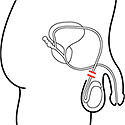 Sterilization Surgery for Men
Sterilization Surgery for Men
Vasectomy
What is it?
A surgery that blocks a man’s vas deferens (the tubes
that carry sperm from the testes to other glands). Semen
(the fluid that comes out of a man’s penis) never has any
sperm in it.
How do I use it?
- This is a surgery a man has only once.
- It is permanent.
How do I get it?
- A man needs to have surgery.
- Local anesthesia is used.
Possibility of getting pregnant
(Number of pregnancies expected per 100 women who use this method for one year))
Out of 100 women whose partner uses this method, less than 1 may get
pregnant.
Some Risks
Does it protect me from sexually transmitted infections (STIs)? No.
Birth Control Chart (PDF)
To learn more:
For the most recent information:
Go to Drugs @ FDA
and type in the name of your drug.
Or
CDRH Super Search
and type in the name of your device.
FDA Office of Women’s Health
www.fda.gov/womens
This guide should not be used in place of talking to your doctor or reading the label on your medicine bottle. The drug and risk information may change.
 Birth Control Guide
Birth Control Guide Male Condom (Latex or Polyurethane)
Male Condom (Latex or Polyurethane) Oral Contraceptives (Combined Pill)
“The Pill”
Oral Contraceptives (Combined Pill)
“The Pill” Oral Contraceptives (Progestin-only)
“The Pill”
Oral Contraceptives (Progestin-only)
“The Pill” Oral-Contraceptives (Extended/Continuous Use)
“The Pill”
Oral-Contraceptives (Extended/Continuous Use)
“The Pill” Emergency Contraceptives
“The Morning After Pill”
Emergency Contraceptives
“The Morning After Pill” Sterilization Surgery for Women
Sterilization Surgery for Women Sterilization Implant for Women
Sterilization Implant for Women Sterilization Surgery for Men
Sterilization Surgery for Men